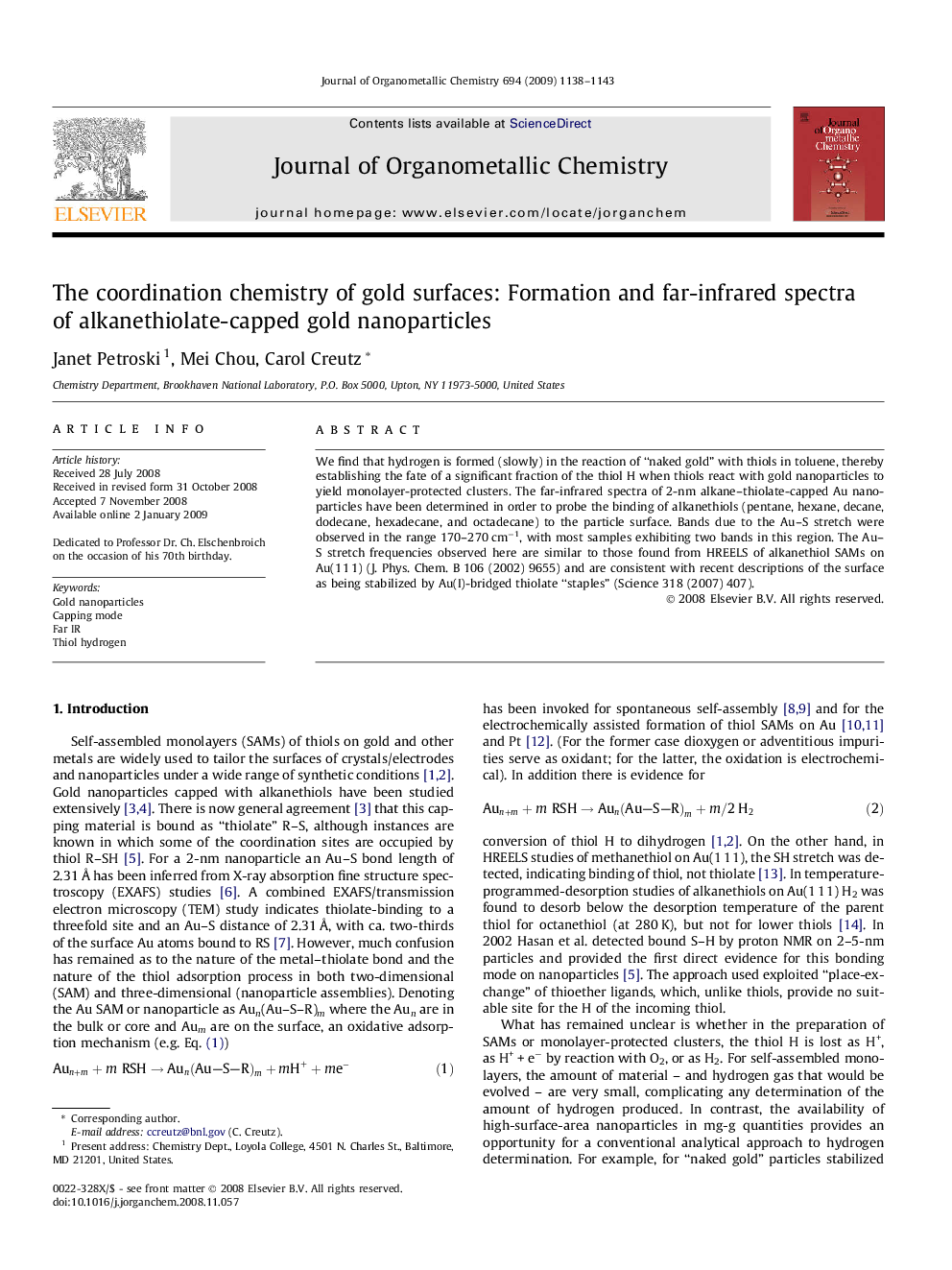| Article ID | Journal | Published Year | Pages | File Type |
|---|---|---|---|---|
| 1324664 | Journal of Organometallic Chemistry | 2009 | 6 Pages |
We find that hydrogen is formed (slowly) in the reaction of “naked gold” with thiols in toluene, thereby establishing the fate of a significant fraction of the thiol H when thiols react with gold nanoparticles to yield monolayer-protected clusters. The far-infrared spectra of 2-nm alkane–thiolate-capped Au nanoparticles have been determined in order to probe the binding of alkanethiols (pentane, hexane, decane, dodecane, hexadecane, and octadecane) to the particle surface. Bands due to the Au–S stretch were observed in the range 170–270 cm−1, with most samples exhibiting two bands in this region. The Au–S stretch frequencies observed here are similar to those found from HREELS of alkanethiol SAMs on Au(1 1 1) (J. Phys. Chem. B 106 (2002) 9655) and are consistent with recent descriptions of the surface as being stabilized by Au(I)-bridged thiolate “staples” (Science 318 (2007) 407).
Graphical abstractReaction of “naked gold” with thiols RS–H yields H2, establishing the fate of thiol H when RS-capped nanoparticles are formed. The far-infrared spectra of such nanoparticles exhibit νAu−S very similar to values reported for 2D SAMs and for Au(I) complexes, consistent with recent structural models featuring a “staple” motif.Figure optionsDownload full-size imageDownload as PowerPoint slide
